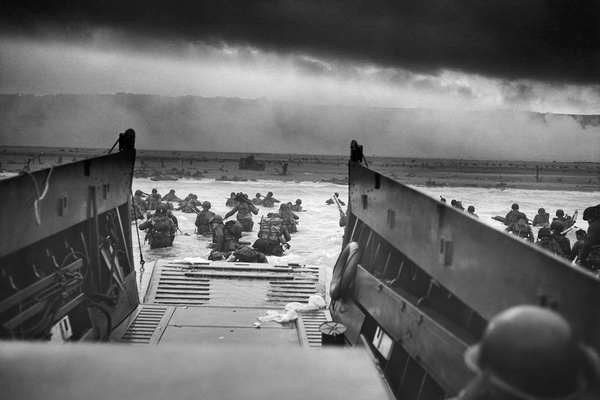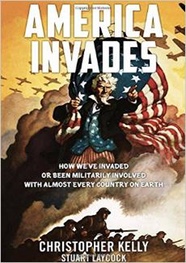Would the D-Day Invasion Have Been Possible if Facebook Existed?

Seventy-one years ago on June 6, 1944 the Allied armies waded ashore on the beaches of Normandy to liberate Nazi-occupied Europe in what was the greatest American invasion of all time. The night before, on June 5th, American airborne forces (82nd and 101st) had landed on the western flank of the invasion area near St. Mere Eglise while British airborne forces secured the eastern flank and Pegasus bridge. They jumped out of C-47 Dakota Skytrain transport planes through darkness and into glory. Some arrived by glider. Private John Steele of the 82nd airborne landed on the steeple of the church at St. Mere Eglise where he played “dead” and survived.
 They
came ashore the next morning on five different beaches. Brigadier
General Ted Roosevelt jr. (the son of President Teddy Roosevelt)
landed with his men on Utah facing relatively little German
opposition. Having missed their designated landing area by
about a mile, Roosevelt was asked whether his troops should
re-embark. He replied, “We’ll start the war from right
here.”
They
came ashore the next morning on five different beaches. Brigadier
General Ted Roosevelt jr. (the son of President Teddy Roosevelt)
landed with his men on Utah facing relatively little German
opposition. Having missed their designated landing area by
about a mile, Roosevelt was asked whether his troops should
re-embark. He replied, “We’ll start the war from right
here.”
The Canadians stormed ashore on Juno beach and included James Doohan who would later find fame as “Scottie” on Star Trek. Sword and Gold were reserved for the British forces. A tiny contingent of French commandos joined the British on Sword and helped capture Ouistreham destroying the Casino. The worst Allied casualties took place on bloody Omaha partly due to an abbreviated naval bombardment of the German positions.
The Allies, in spite of the vast size of their armada and the relative openness of their societies, had, remarkably, managed to achieve strategic surprise over the Germans. Rommel, believing that adverse weather would prevent an immediate attack, had gone to Germany where he was celebrating his wife's 50th birthday. Hitler persisted in the mistaken belief that the Normandy invasion was a feint and that the "real" blow would be struck at the Pas de Calais.
Eisenhower had planned the invasion form his offices at 20 Grosvenor square in London which is today a construction site. Number One Grosvenor square (now the Canadian High Commissioners Office) was the wartime location of the American embassy. Averell Harriman presided over Lend Lease from 3 Grosvenor square helping to fund our wartime Allies. The Office of Strategic Services (OSS), forerunner of the CIA, had its offices at 70 Grosvenor square (now an office building). Little wonder that this neighborhood was known as "Little America" at the time. Some wags even referred to Grosvenor square as "Eisenhowerplatz".
Just imagine if an operation comparable to the Normandy invasion had to occur today in 2015 in the age of social media! An interactive poll on Allied strategy would be tweeted: "Which beach do you like more, Normandy or Pas de Calais?" Could all the members of the 101st Screaming Eagles painted with Indian warpaint and Mohawk haircuts be counted upon to not post any of their pictures on Facebook? One might hope so but...?
We must remember always what happened seventy-one years ago today. There were over 10,000 Allied casualties on June 6, 1944 and many more in the weeks and months to come. General Patton may have summed it up best when he said, "It is foolish and wrong to mourn the men who died. Rather we should thank God that such men lived."
A visit to Normandy can help all of us, regardless of political ideology, learn a bit more about what it means to be an American. We can all take pride in what those very young men did seven decades ago.